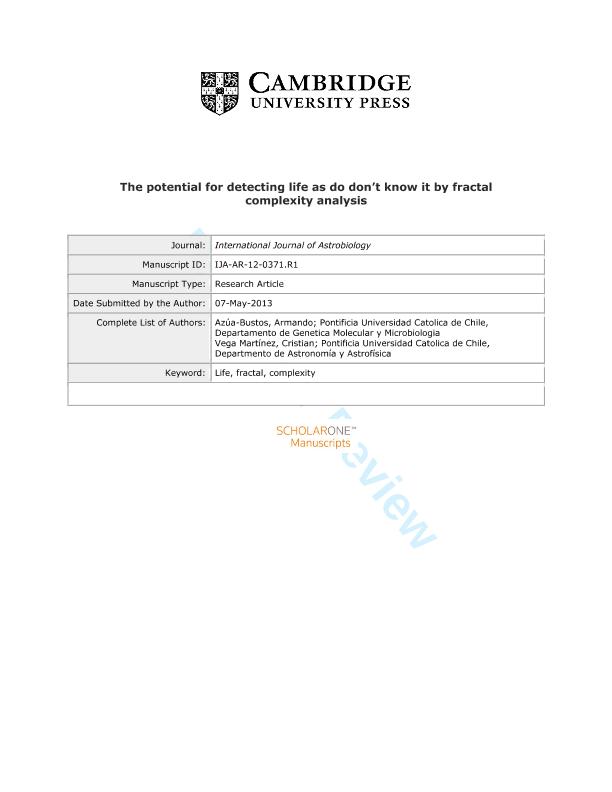Artículo
The potential for detecting "life as we don't know it" by fractal complexity analysis
Fecha de publicación:
10/2013
Editorial:
Cambridge University Press
Revista:
International Journal Of Astrobiology
ISSN:
1473-5504
Idioma:
Inglés
Tipo de recurso:
Artículo publicado
Clasificación temática:
Resumen
Finding life in the Universe entirely different to the one evolved on Earth is probable. This is a significant constraint for life-detecting instruments that were sent and may be sent elsewhere in the solar system, as how could we detect life as ‘we don't know it’? How could we detect something when we have no prior knowledge of its composition or how it looks like? Here we argue that disregarding the type of lifeform that could be envisioned, all must share in common the attribute of being entities that decrease their internal entropy at the expense of free energy obtained from its surroundings. As entropy quantifies the degree of disorder in a system, any envisioned lifeform must have a higher degree of order than its supporting environment. Here, we show that by using fractal mathematics analysis alone, one can readily quantify the degree of entropy difference (and thus, their structural complexity) of living processes (lichen growths and plant growing patterns in this case) as distinct entities separate from its similar abiotic surroundings. This approach may allow possible detection of unknown forms of life based on nothing more than entropy differentials of complementary datasets. Future explorations in the solar system, like Mars or Titan, may incorporate this concept in their mission planning in order to detect potential endemic lifeforms.
Palabras clave:
Complexity
,
Fractal
,
Life
Archivos asociados
Licencia
Identificadores
Colecciones
Articulos(IALP)
Articulos de INST.DE ASTROFISICA LA PLATA
Articulos de INST.DE ASTROFISICA LA PLATA
Citación
Azúa Bustos, Armando; Vega Martínez, Cristian Antonio; The potential for detecting "life as we don't know it" by fractal complexity analysis; Cambridge University Press; International Journal Of Astrobiology; 12; 4; 10-2013; 314-320
Compartir
Altmétricas




